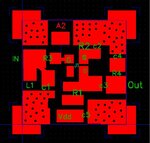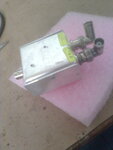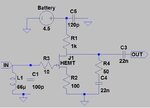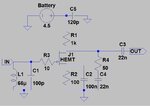koushikr_in
Member level 2
Hi,
I am designing low noise amplifier using HEMT ATF34143. The frequency of operation is around 1-2 MHz. The HEMT is followed by two stages of opamp (OPA847) (Gain=2000).
I would like to measure the total output noise of my amplifiers. I don't see any interference when I measure the noise of the opamp stage alone. When the HEMT is connected at the input of opamp, I see a 50 Hz modulation of my noise signal. Why?
A battery is used as power supply for the amplifiers. Measurements are dne with an ADC at a sampling rate of 20 MHz.
The ouput waveforms are attached.
I am designing low noise amplifier using HEMT ATF34143. The frequency of operation is around 1-2 MHz. The HEMT is followed by two stages of opamp (OPA847) (Gain=2000).
I would like to measure the total output noise of my amplifiers. I don't see any interference when I measure the noise of the opamp stage alone. When the HEMT is connected at the input of opamp, I see a 50 Hz modulation of my noise signal. Why?
A battery is used as power supply for the amplifiers. Measurements are dne with an ADC at a sampling rate of 20 MHz.
The ouput waveforms are attached.





